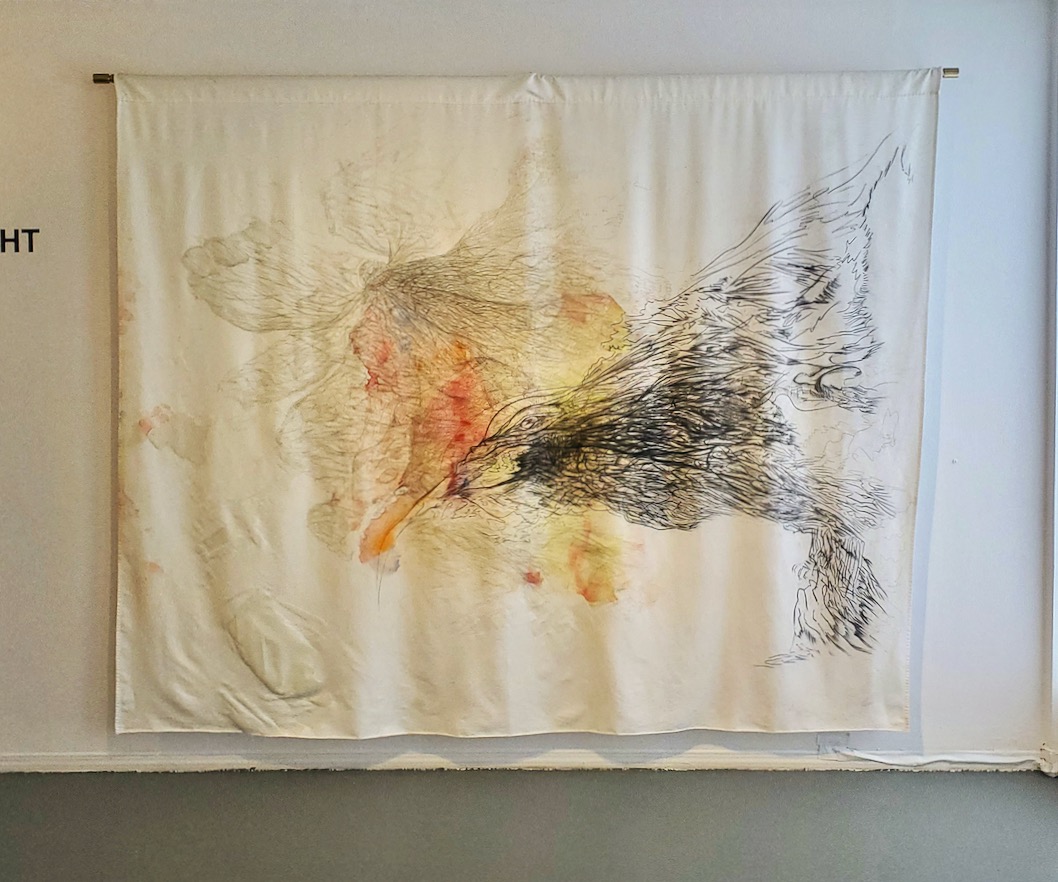At Harcourt House, two exhibitions on display in adjacent galleries seem at first glance to be in stark contrast to one another. In the Main Gallery, Claudia Chagoya’s Novem is dimly lit, the gallery a cavernous space with the sound of dripping water echoing throughout. In the Haakonson Family Gallery, Madeline LeBlanc’s Natural Light, appropriately, is bright; sunlight bursts in through the wall of west-facing windows. But beyond first impressions, the two shows — which both use cloth to tell stories about the aftermath of violence and hardship — have a lot in common.
Born in Zacatecas, Mexico, Chagoya is an interdisciplinary artist based in Calgary. Her work often takes the form of installations made from various fabrics. In Novem, Chagoya has taken nine rebozos — shawls used by Mexican women as part of funerary services — and coated them with salt to create sculptural forms hanging from the roof of the gallery. The works have been paired with soundscapes made from recorded prayers, water drips and recited petitions for justice. The effect is haunting — like walking through an echoey cave thick with stalactites.
The subject of Chagoya’s work is Mexico’s long history of femicide. (The country has the second highest femicide rate in Latin America, and government reforms, aimed at eliminating femicide, have so far proven unsuccessful.) By combining the shawls with salt — an element often placed on altars dedicated to departed loved ones during the Day of the Dead celebrations — Chagoya is creating objects of grief. Not so much memento mori (“remember you must die”) as memento mortuorum — “remember the dead.”
Those remembrances take on tangible, almost-bodily form in the gallery, transforming the violent history Chagoya is engaging with into something deeply moving.
Though they differ in subject, LeBlanc’s work, too, uses fabric to transform difficult subject matter into something compelling. The Edmonton-based artist created Natural Light during the COVID-19 pandemic, a time when she experienced extreme poverty. Without any way to pay for art supplies, she turned to materials she could afford, like thrifted bedsheets, crayons and pencils, to create sweeping sheets of colour and gesture. LeBlanc’s drawings include elements like fairies and floral shapes, which act as symbols of escapism but also as a kind of refusal to succumb to the severity of daily survival.
